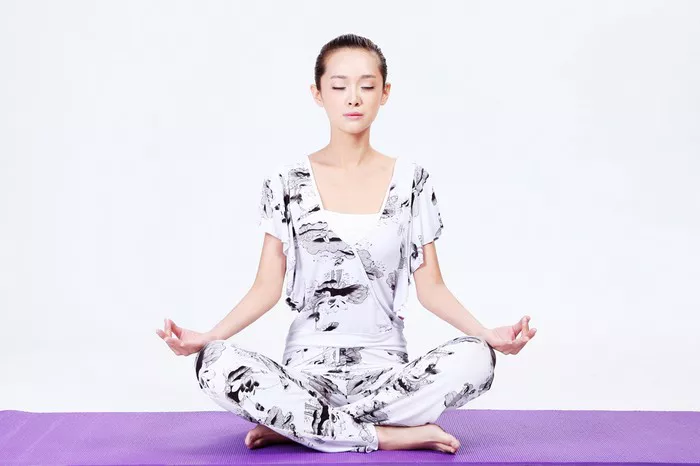Yoga, an ancient practice originating in India, has gained immense popularity worldwide for its myriad health benefits. Among its many advantages, yoga is known to help manage blood pressure levels effectively. For individuals dealing with low blood pressure, or hypotension, certain yoga practices can be particularly beneficial. In this article, we delve into the world of yoga to uncover the best practices tailored to address low blood pressure concerns.
Understanding Low Blood Pressure:
Before delving into the specifics of yoga for managing low blood pressure, it’s crucial to understand what low blood pressure entails. Low blood pressure, or hypotension, is characterized by a reading lower than 90/60 mm Hg. While it’s often considered a positive sign of good health, excessively low blood pressure can lead to symptoms such as dizziness, fainting, fatigue, and difficulty concentrating. It can also result from various factors, including dehydration, nutritional deficiencies, heart problems, and hormonal imbalances.
Adapted Yoga Practices for Low Blood Pressure:
Yoga offers a holistic approach to improving overall well-being, including regulating blood pressure levels. When crafting a yoga practice to manage low blood pressure, it’s essential to focus on gentle movements, deep breathing techniques, and relaxation exercises. Here are some adapted yoga practices that individuals with low blood pressure can incorporate into their routines:
1. Restorative Yoga:
Restorative yoga emphasizes relaxation and rejuvenation through gentle poses supported by props such as blankets, bolsters, and blocks. These poses are held for extended periods, allowing the body to relax deeply and release tension. For individuals with low blood pressure, restorative yoga can help alleviate stress, promote better circulation, and induce a state of calmness conducive to stabilizing blood pressure levels.
2. Chair Yoga:
Chair yoga is a modified form of yoga that utilizes a chair for support, making it accessible for individuals with mobility issues or those who may find traditional yoga poses challenging. Chair yoga incorporates gentle stretches, seated poses, and breathing exercises, all of which can be beneficial for managing low blood pressure. By focusing on controlled movements and mindful breathing, chair yoga promotes relaxation and helps improve circulation without putting undue strain on the body.
3. Pranayama (Breathing Exercises):
Pranayama, or yogic breathing techniques, play a crucial role in regulating blood pressure and promoting overall well-being. Deep breathing exercises such as diaphragmatic breathing, alternate nostril breathing (Nadi Shodhana), and abdominal breathing can help balance the autonomic nervous system, which regulates involuntary bodily functions including blood pressure. Practicing pranayama regularly can enhance oxygenation, reduce stress, and support healthy blood pressure levels.
4. Mild Inversions:
Certain inverted yoga poses, such as Legs Up the Wall (Viparita Karani) or Supported Bridge Pose (Setu Bandhasana), can be beneficial for individuals with low blood pressure. These poses help improve circulation by encouraging blood flow from the lower body back to the heart and brain. However, it’s essential to approach inversions with caution and avoid holding them for extended periods, especially if experiencing dizziness or discomfort.
5. Savasana (Corpse Pose):
Savasana, often practiced at the end of a yoga session, involves lying flat on the back in a relaxed and comfortable position, with arms and legs slightly apart. This pose allows the body to fully relax and integrate the benefits of the preceding practice. Savasana is particularly beneficial for individuals with low blood pressure, as it promotes deep relaxation, stress reduction, and restoration of equilibrium in the body.
Precautions and Considerations:
While yoga can be a valuable tool for managing low blood pressure, it’s essential to approach practice with awareness and caution, especially for individuals with underlying health conditions or specific concerns. Here are some precautions and considerations to keep in mind:
1. Consultation with Healthcare Provider: Before starting any new exercise regimen, including yoga, individuals with low blood pressure should consult with their healthcare provider, particularly if they have underlying medical conditions or are taking medications that may affect blood pressure.
2. Listen to Your Body: Pay attention to how your body responds during yoga practice, and honor any signs of discomfort or dizziness. If you experience lightheadedness or feel faint, come out of the pose immediately and rest in a comfortable position.
3. Stay Hydrated: Proper hydration is essential for maintaining healthy blood pressure levels. Drink an adequate amount of water before, during, and after yoga practice to prevent dehydration, which can exacerbate low blood pressure symptoms.
4. Avoid Overexertion: While yoga offers numerous benefits, pushing oneself too hard can lead to fatigue and potential health risks, particularly for individuals with low blood pressure. Practice yoga mindfully, and modify poses as needed to suit your body’s abilities and limitations.
5. Gradual Progression: If you’re new to yoga or returning after a hiatus, start slowly and gradually increase the intensity and duration of your practice over time. This approach allows your body to adapt and reduces the risk of injury or adverse effects on blood pressure.
Conclusion
Yoga offers a diverse range of practices that can be tailored to address specific health concerns, including low blood pressure. By incorporating gentle movements, deep breathing techniques, and relaxation exercises, individuals with low blood pressure can harness the therapeutic benefits of yoga to promote overall well-being and support healthy blood pressure levels. However, it’s essential to approach yoga practice mindfully, listen to your body, and seek guidance from healthcare professionals as needed. With dedication and consistency, yoga can serve as a valuable tool for managing low blood pressure and enhancing quality of life.





















